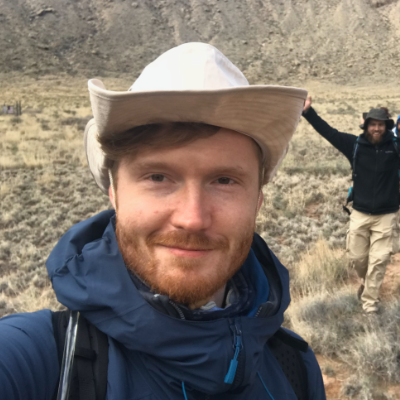
Dr Sietze de Graaff
Biography
Dr. Sietze de Graaff now works at NWO (Dutch Research Council) in The Netherlands, as program coordinator.
Dr. Sietze de Graaff graduated in April 2022 with a PhD thesis titled: Making sense of destruction: A Geochemical and Petrological Investigation of the Impact Melt Rocks and Crystalline Basement of the Chicxulub Impact Structure.
PROJECTS:
Brain-Belspo | Chicxulub 2016 IODP-ICDP deep drilling: From cratering to mass extinction
Barringer Family Fund for Meteorite Impact Research | The Čanj section, Montenegro. Evidence for an impact event at the Triassic-Jurassic Boundary?
RESEARCH SUMMARY:
I'm a petrologist with a particular interest in petrography and event-stratigraphy, having worked mostly on mantle geochemistry through the examination of the Oman ophiolite for my MSc thesis and the Tr/J extinction event for my BSc thesis. I work with a stoic "Do it well or don't do it at all" mind set. I have a research interest in petrology, sedimentology and geochemistry, with a distinct interest in mantle processes, extinction events and (trace-)element partitioning. Broad, but selective, interests during my bachelor and master have given me comprehensive experience in my fields of interest, which I currently employ in my research on impact cratering and specifically impact melt formation.
Impact cratering is one of the most important geological processes on rocky planets in the Solar System, causing almost instantaneous and severe changes to the geology, both on macro-scale (i.e the formation of impact crater; environmental overturn) and micro-scale (i.e altering the physical properties of the target lithologies), they unequivocally play an important part in the shaping of a planet. A ubiquitous result of impact events, almost regardless of size, is the formation of impactites. These rocks represent unique lithologies only formed during (and directly after) impact events. They can vary from impact melt and impact melt rock to impact melt breccias (e.g. suevite) and ejecta. Importantly, the geochemical composition of impactites is unequivocally related to the target rock compositions, as such these lithologies can typically be assigned to a single crater. However, this relationship between craters and impactites is not always straightforward, i.e. while breccias and ejecta are generally heterogeneous, impact melt and impact melt rocks are often considered to be geochemically homogeneous (based both on geochemical and theoretical data). Nonetheless, heterogeneities in impact melt rock do exist, most notably in trace element (e.g. the Lake St. Martin impact structure) and isotopic compositions (e.g. Popigai crater). These variations can be related to a variation in target rock contributions (i.e. the impact melt rock is not well mixed) and/or large heterogeneities in target rock composition (i.e. complex target rock/ large variety in target rock composition). In that context it becomes important to better understand impact melt (rock) formation and its geochemical variation. My research aims to ground truth impact melt formation through the study of the Chicxulub crater impact melt, and through this shed more light on both terrestrial as well as extra-terrestrial crater formation.
Additionally, I received funding to pursue the study of a deep-marine Triassic-Jurassic boundary section in Montenegro to further evaluate the events leading up to the End Triassic extinction event.
The areas of my expertise are:
- Petrology
- Geochemistry (TIMS, MC-ICPMS, ICPMS, XRF & TGA)
- Geological mapping, with experience in tectonic, stratigraphic, sedimentological and petrological mapping and interpretation
- Sedimentology
- Stratigraphy
- Laboratory work, with experience in mineral/rock separation and preparation in type 1000 clean rooms
FIELD SITES:
Previous fieldwork has brought me to great places in The Netherlands, Belgium, Spain, Germany, France, Montenegro, Canada, The USA and Oman. Currently I work on samples recovered from from IODP-ICDP Expedition 364 drill core, which was extracted from the peak ring of the Chicxulub impact crater, c. 30 km northwest of Progreso in the Gulf of Mexico.
KEYWORDS:
Impact melt formation, Impact cratering, Petrography, Petrology, Geochemistry, Chicxulub, Event-stratigraphy, K/Pg, Tr/J.
